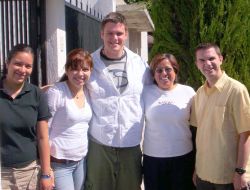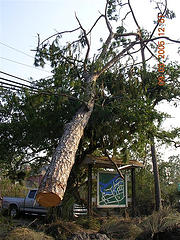It’s time again for one of the biggest holidays of the year in Mexico – The Day(s) of the Dead (Día de los Muertos). It’s celebrated between the 31st of October and the 2nd of November, primarily the last two days.
So what’s it all about? Well, the Day of the Dead goes back thousands of years. Today, the celebration is a mixture of the many religions from prehispanic Mexico (from cultures such as the Aztecs, Mayas, and Toltecs), as well as the Christian symbolism that was brought with the conquest.
The Day of the Dead is celebrated differently depending on where you are in Mexico, but here are some fairly common elements. During the Day of the Dead, spirits of deceased relatives are invited back into the home. Generally the children are said to return on the 1st, with the adults following on the 2nd. The spirits are invited to join the party, in a sense. An alter is erected in each house, containing objects such as bones and skulls, candles, icons of the saints, flowers (marigolds in particular are believed to attract the spirits), and photos of the dead. Things that the dead person liked are often included for them to enjoy. Some simply honour the grave of the dead or visit it. In some areas, a vigil is held by the side of the grave all night.
Traditional foods and decorations can be seen everywhere. There are candy skulls, popular with the children, skeletons as decorations, and the Bread of the Dead, and essential part of the celebration. Gifts are given that have a death theme. Prayers are made for the dead during this time as well, and people go to mass.
Around this time the popularity of “Saint Death” becomes apparent, as statues and pictures are sold. Devotion to this female spirit in Mexico is on the rise, though officially the belief is condemned by the Roman Catholic Church. Alters are built in worship of Saint Death, in the hopes that she will protect a home or business.
In spite of how it may all sound, this is a big party in Mexico of a very upbeat kind. It’s about children, music and celebration. Often big pilgrimages are made, with friends and drinking and camp outs. It’s not a sad day of mourning. It’s a time that people want to connect again with those that are gone, in hopes of connecting in eternity as well. It’s not morbid in tone, but festive.
Again, the celebration differs from area to area. In some areas, the celebration is very religious, and ancestors are even worshiped. In other areas, the celebration is quite secular. So it’s very hard to generalize. But hopefully that will give you a brief introduction into what is a very important part of Mexican culture.




